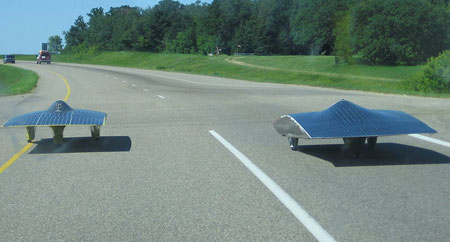
Toyota is apparently working on an electric vehicle that uses solar panels installed on the vehicle to recharge itself, according to Japanese business daily The Nikkei. It is of course just one way other than brake energy regeneration to recharge the car’s batteries. The car will also support plug-in charging, which could also be solar-sourced via solar panels installed on a home’s roof.
This piece of news seems to coincide with the fact that it’s battery partner Panasonic will be acquiring Sanyo, which is supposed to be a leader in solar energy technology. However, The Nikkei did not cite any sources when producing the report.
First talk of a Toyota powered by solar panels surfaced in July last year, also from The Nikkei. That report was followed by another one by Reuters which claimed the solar panels would be sourced from Kyocera, and would only produce enough power to run a car’s air conditioning, which kinda makes sense – a car’s air conditioning unit is probably run at full blast during a hot day, with plenty of sunlight!
The Reuters report also carried a quote which said it would be very difficult for solar energy to power anything more than that in real time, so it is more of a symbolic gesture, one that will be eating into the cost of the car, so it will truly be only for the rich and green-conscious for the time being,
There are actually solar cars around, heard of the World Solar Challenge? Participants race across the Australian continent in solar cars that weigh only about less than 200kg, have good aerodynamics, are quite large because of the many solar panels that need to be installed on the car, and can typically go up to a top speed of between 130km/h to 140km/h. Also, a company called Solar Electric Vehicles based in the US provides a service that retrofits the Toyota Prius and other Toyota hybrids with solar panels that can provide up to 1200 watt hours a day of energy.
Toyota Passo Sette 7-seater MPV: full details!
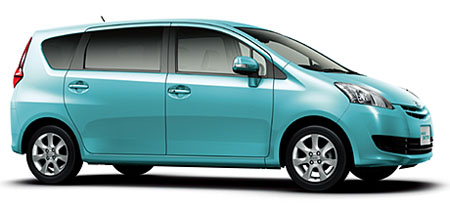
Toyota’s latest compact 7-seater MPV has been unveiled in Japan on Christmas day, so let’s check out the full details of the new compact people carrier that will make its way onto Malaysian shores sometime in the second half of 2009 as the new Perodua MPV.
As with alot of other Toyota compact cars, the new MPV is available under both the Toyota and Daihatsu badges as compact cars like these are pretty much mainly Daihatsu-engineered as it is their speciality.
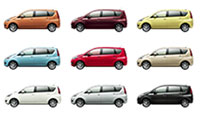 The Toyota version is called the Toyota Passo Sette, which essentially means Passo Seven, or a 7-seater version of the Toyota Passo. Sette means seven in Italian. The Daihatsu version is called the Daihatsu Boon Luminas, where Luminas is a combination of the words roomy and luminous.
The Toyota version is called the Toyota Passo Sette, which essentially means Passo Seven, or a 7-seater version of the Toyota Passo. Sette means seven in Italian. The Daihatsu version is called the Daihatsu Boon Luminas, where Luminas is a combination of the words roomy and luminous.
All variants of the Passo Sette and the Boon Luminas are powered by the 1.5 liter 3SZ-VE engine putting out 109 PS at 6,000rpm and 141Nm of torque at 4,400rpm. Both front wheel drive and 4WD variants use a 4-speed auto, and the front wheel drive version is rated at 15.6km per liter under the 10-15 Japanese test cycle. There is an Eco-Drive indicator light on the dashboard to inform the driver when his driving style is economical.
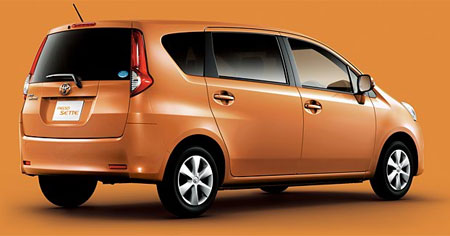
As previously reported, the compact Toyota Passo Sette measures 4,180mm long, 1,695mm wide and 1,620mm tall, with a long 2,750mm wheelbase to maximize the interior space which is 2,550mm long. The Boon Luminas CX with a bodykit is slightly longer at 4,195mm. Other dimensions that Toyota has provided include a 1,630mm space between the front and rear seat rows, a 150mm split seat slide for the middle row, a wide 935mm rear door opening to ease getting in and out, and a 630mm hip point for the driver to also aide ingress and egress.
Despite the car’s relatively long wheelbase its wheels are at the edges of the vehicle so it is compact and it has a 5.2m turning radius.
Toyota has provided the Toyota Passo Sette with some nice features in the interior including a rear seat entertainment system with a 7 inch widescreen monitor, a DVD player with headphone outputs, and the ability to play different media in the front and rear entertainment systems. There is an optional keyless entry and start with a key fob.
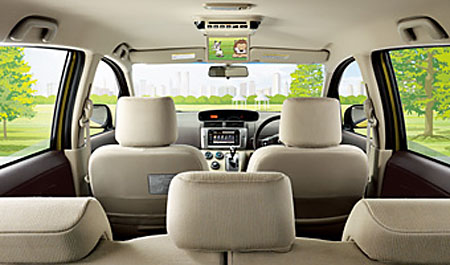
The Boon Luminas also comes standard with a “music server”, which essentially lets you rip 660 minutes of audio content from your audio CDs and store it onto the car’s on-board entertainment system so you don’t have to carry your CDs around in your car. This is also a specifiable option for the Toyota Passo Sette.
The Japanese specs offers some rather decent safety features, though in the interests of cost and maximizing profit I doubt all of them will make it onto the Perodua specifications. The Passo Sette and Boon Luminas has a total of 6 SRS airbags, vehicle stability control (VSC), traction control, Dynamic Support Headrests which reduce the risk of rear-end collision whiplash, and finally ABS brakes.
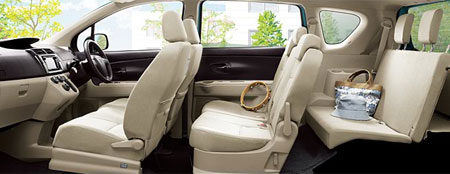
Now for the Japanese market prices. The Daihatsu Boon Luminas has higher specs so it is more expensive starting from 1,535,000 yen all the way up to 2,073,000 yen, while the lower spec Toyota Passo Sette starts from 1,490,000 yen but can be fully loaded up to a maximum price of 2,033,000 yen.
Please continue reading for a whole load of more photos and videos! It will give you a rough idea of the car to expect next year from Perodua.
New Toyota EV concept for Detroit 2009
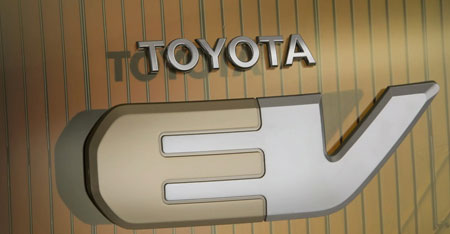
The 2010 Toyota Prius will be making its first public appearance at the 2009 Detroit Motor Show, but it will be joined by another green sibling, one that the public has not seen yet. The other vehicle shown is a concept vehicle and Toyota’s first electric vehicle. Nothing much other than the logo for the new range of EV vehicles have been revealed, so we’ll have to wait until January to find out what this new electric vehicle is.
Toyota AE86 “spiritual successor” delayed!
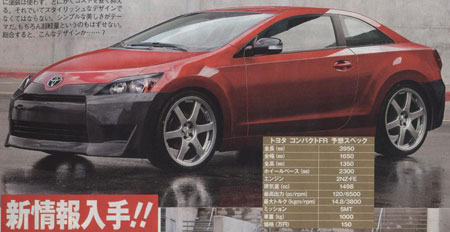
Lots of delays in the Toyota camp thanks to the industry’s sad outlook. Right after Toyota and Isuzu agreed to temporarily freeze their join diesel engine project, it appears that the rear wheel drive sports car developed with FHI’s Subaru that it was supposed to launch in end-2011 will be postponed to beyond 2012 or later. That’s like, over 4 years from now, which is close to an entire Japanese product 5 year cycle, though Toyota seems to be extending the shelf life of their products these days. Toyota began reviewing all its new projects beginning last month after slashing its profit estimates by more than half thanks to falling North American and European sales, and a stronger Japanese yen.
Toyota may post first loss in 70 years
 Here’s something to put the gravity of the current situation automotive industry into perspective. After 70 continuous years of profits, Toyota is predicted by some Japanese business media to likely post its first annual parent-only operating loss in 70 years thanks to low sales and the appreciating Japanese yen. It’s last operating loss was in the 1937-1938 financial year, which was also its first year of operation.
Here’s something to put the gravity of the current situation automotive industry into perspective. After 70 continuous years of profits, Toyota is predicted by some Japanese business media to likely post its first annual parent-only operating loss in 70 years thanks to low sales and the appreciating Japanese yen. It’s last operating loss was in the 1937-1938 financial year, which was also its first year of operation.
Toyota is a company that has remained resilient throughout various recessions in the past. It is a company that can quickly react to market conditions. You only have to look at the big difference between the Toyota Corolla SEG AE101, which some called a “mini-Lexus” and the Corolla AE111 “recession car”, which was a car built during a recession so ended up having many corners cut and designed to be cheap to build.
Some argue that the Toyota Corolla has just not been the same since that turning point but even despite that, it’s just not enough during this period of time which some call the “mother of all recessions”.
But not all Japanese media share these sentiments. Those that are predicting the loss are of the opinion that the second half results will wipe out the profit that Toyota made during the first half of the current financial year. Most of the others agree with the 2nd half losses, but think the profits gained in the 1st half would not be totally wiped out, which would mean a small annual profit.
Toyota Camry: new Perak state official carta
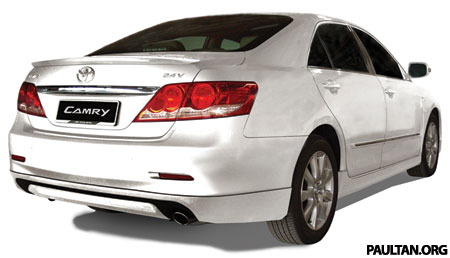
The Perak government has purchased a fleet of Toyota Camry 2.4Vs, a total of 16 units worth RM2.7 million, or about RM167,000 each. Apparently they had to pay the full price for the cars because the Federal government allegedly refused to provide a tax exemption for the purchase.
Had they got an exemption, the purchase price would only have been RM97,000 per unit according to Senior State Executive Councillor (EXCO) Datuk Ngeh Koo Ham. The tax would have gone back to the government anyway, but the only difference is it’ll be channeled to the Federal government and not the state government.
I wonder if the Terengganu state government got a tax exemption for its Mercedes-Benz E200K purchase, since RM3.43 million for 14 cars is only RM245k each, well below the retail price of the E200K, though apparently such deals can even be gotten by people like you and me, though the cars will be pre-registered.
Reasons cited by the Perak government to justify the purchase are the usual ones – the high maintenance cost of the existing Proton Perdana V6 fleet. It seems the cost of maintaining the state’s fleet over a period of 4 years came up to more than RM1 million.
I don’t think Toyota Camrys are an excessive purchase but this move sends some wrong signals. Firstly, was the justification for the 2.4 liter model? If they had picked the cheaper Toyota Camry 2.0E model priced at RM141,109 instead, the total purchase cost would only be RM2.3 million for 16 units, a savings of RM 400,000, which is quite a substantial amount and can probably be used to fuel the fleet for an entire year!
Secondly, as I understand there is a policy to purchase locally assembled cars, probably for reasons of supporting the local manufacturing industry, why pick a CBU car when there are CKD alternatives such as the Honda Accord and the Peugeot 407?
New Toyota Passo Sette / Daihatsu Boon Ruminous 7-seater MPV to make Christmas 2008 debut!
Toyota and Daihatsu have called for a joint press conference in Japan on Christmas day to unveil their latest 7-seater compact MPV, strongly believed to be named the Toyota Passo Sette and the Daihatsu Boon Ruminous. After the car’s public unveiling this month, it will go on sale early next year about the same time as Proton is expected to launch its MPV, which could pose a problem for Proton as potential customers in Malaysia would be able to get a preview of this new MPV that will hit Malaysian roads as a Perodua in Q3 2009, just half a year after the Proton MPV is launched.
Still, the two vehicles are not exactly in the same segment. This new Toyota/Daihatsu/Perodua MPV is smaller than the Proton MPV. However because is primarily a Daihatsu product, it inherits the Japanese K-car’s expertise in squeezing the most space into the smallest package. The engine under the hood will be the 3SZ-VE 1.5 liter that’s found in the Toyota Avanza, but installed transversely instead of longitudinally and powering the front wheels instead of the rear wheels.
| Dimensions | New MPV | Sienta | Wish | Freed | Myvi F/L |
| Length | 4180mm | 4100mm | 4650mm | 4215mm | 3750mm |
| Width | 1695mm | 1695mm | 1745mm | 1695mm | 1665mm |
| Height | 1620mm | 1670mm | 1600mm | 1715mm | 1550mm |
| Wheelbase | 2750mm | 2700mm | 2750mm | 2740mm | 2440mm |
(dimension comparison table from my previous post)
Given how many Malaysians think long and hard between the Persona and the Myvi as if they were in the same segment when they are actually not because of similiar pricing, this new Perodua MPV could pose a real threat to the new Proton MPV for those who just must have a “Toyota”, whether with a Perodua badge or not.
An indicated price for the Japanese market car is between 1.45 million yen to 1.8 million yen, which is about RM57k to RM70k, so that should give you guys an idea how much a localised version would cost. Don’t expect things like the column shifter you see in the brochure above to make it into the Perodua version as the Passo also had that but it got switched to a traditional shifter between the seats for the Myvi.
Whether you want to call it the new Toyota Passo Sette, or the Daihatsu Boon Ruminous, or the 2009 Perodua MPV, you can check out interior photos and a side profile which have been revealed in the brochure above, which does not mention the vehicle’s name yet. Or for more details, check out the related links listed below.
Related Posts:
2009 Perodua MPV Artist’s Impression
New Toyota MPV: details of the new 3-row compact MPV that Perodua will also build
New Perodua MPV coming in September 2009
Toyota overall output down but Daihatsu gains
This is one sure sign of the shift in consumer preferences towards smaller vehicles: Toyota’s global production (for all Toyota brands) was down by 12.6% to 791,665 units for the month of October and its sales in Japan dropped by 6.9% for the month compared to October last year at 177,606 units, but its Daihatsu brand improved its output by 11.5% to 82,780 units mainly thanks to increase production and demand in Indonesia. This is just going to go up even further when the new Toyota/Daihatsu/Perodua MPV (artist impression shown above) is launched early next year.
For the overall first 10 months of 2008, the Toyota Group produced 8,004,661 units, up 1.4% from the same period in 2007.
Toyota Auris gets new Toyota 1NR-FE 1.33L Dual VVT-i engine in UK line-up
Toyota has replaced the 1.4 liter VVT-i engine (4ZZ-FE) in the Toyota Auris with a new 1.33 liter Dual VVT-i engine (1NR-FE) that produces more power, more torque, more mileage, less CO2 emissions, yet has a smaller displacement and also weighs 13kg less despite having a more complicated Dual VVT-i drivetrain, thanks to pistons that are 36% lighter among other improvements. It’s also more compact, and Toyota claims it is the same size as the inline-3 1.0 liter VVT-i engine.
The new engine also has stop-start capability, which automatically stops the engine when the car is stationary, the transmission is in neutral and the driver’s foot is off the clutch pedal. When the driver presses the clutch, the engine is restarted, and Toyota claims a potential fuel savings and CO2 reduction of up to 15% thanks to this.
For a smoother restart, Toyota says this new engine is 9dB quieter and 0.3 seconds quicker to start compared to the outgoing 1.4 liter engine.
The following is a comparison table between the two engines.
| 1.33L Dual VVT-i | 1.4L VVT-i | |
| Engine Code | 1NR-FE | 4ZZ-FE |
| Displacement | 1,329cc | 1,398cc |
| Power | 101hp @ 6,000rpm | 97hp @ 6,000 |
| Torque | 132Nm @ 3,800rpm | 130Nm @ 4,400rpm |
| Bore | 72.5mm | 79.0mm |
| Stroke | 80.5mm | 71.3mm |
| Compression | 11.5:1 | 10.5:1 |
| Combined economy | 48.7mpg | 40.9mpg |
| CO2 emissions | 135g/km | 163g/km |
With the new engine also comes a new 6-speed manual transmission with ratios to match the new torque curve. Both the 5th and 6th gear are overdrive gears for a reduced cruising engine RPM during highway driving. Toyota says this new transmission can handle more torque than the outgoing 5-speed unit and is 11% smaller and has 15% less components despite having one extra gear ratio.



No comments:
Post a Comment